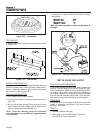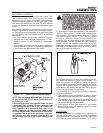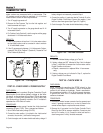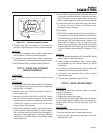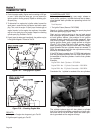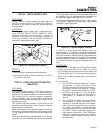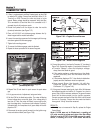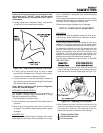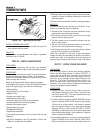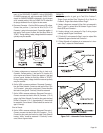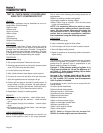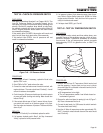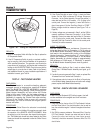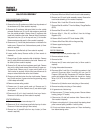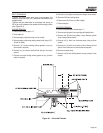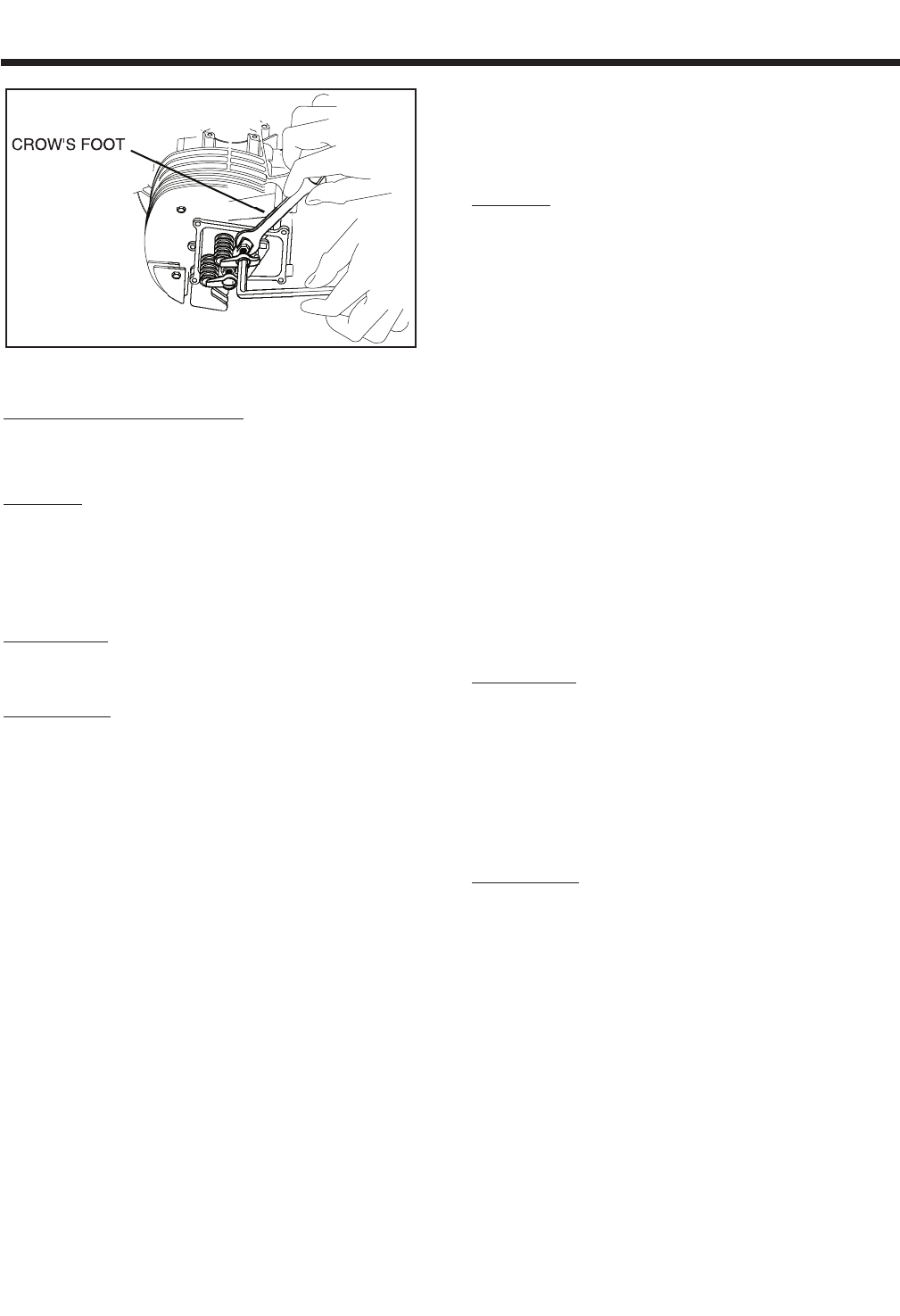
SSeeccttiioonn 77
DDIIAAGGNNOOSSTTIICC TTEESSTTSS
Figure 7-42 – Tightening the Jam Nut
INSTALL ROCKER ARM COVER
1. Use a new rocker arm cover gasket. Install the rocker arm
cover and retain with four screws.
RESULTS:
Adjust valves to specification and retest. If problem
continues, go to Test 38.
TEST 36 - CHECK CARBURETION
DISCUSSION:
If the engine cranks but will not start, one possible
cause of the problem might be the carburetion system.
PROCEDURE:
Before making a carburetion check, be sure the fuel sup-
ply tank has an ample supply of fresh, clean gasoline.
Check that all shutoff valves are open and fuel flows
freely through the fuel line.
Make sure the automatic choke operates properly.
If the engine will not start, remove and inspect the spark
plug. If the spark plug is wet, look for the following:
❏Overchoking.
❏Excessively rich fuel mixture.
❏Water in fuel.
❏Intake valve stuck open.
❏Needle/float stuck open.
If the spark plug is dry look for the following:
❏Leaking carburetor mounting gaskets.
❏Intake valve stuck closed.
❏Inoperative fuel pump.
❏Plugged fuel filter(s).
❏Varnished carburetor
If the engine starts hard or will not start, look for the
following:
❏Physical damage to the AC generator. Check the
Rotor for contact with the Stator.
❏Starting under load. Make sure all loads are discon-
nected or turned off before attempting to crank and
start the engine.
❏Check that the automatic choke is working properly.
RESULTS:
If problem has not been solved, go to Test 37. If car-
buretor is varnished, clean or replace.
1. Remove fuel line at carburetor and ensure that there is an ade-
quate amount of fuel entering the carburetor.
2. Remove the float bowl and check to see if there is any foreign
matter in bottom of carburetor bowl.
3. The float is plastic and can be removed for access to the nee-
dle so it can be cleaned.
4. With all of this removed carburetor cleaner can be used to
clean the rest of the carburetor before reassembly.
5. After cleaning carburetor with an approved carburetor cleaner,
blow dry with compressed air and reassemble.
Shelf life on gasoline is 30 days. Proper procedures
need to be taken for carburetors so that the fuel doesn’t
varnish over time. A fuel stabilizer must be used at all
times in order to ensure that the fuel is fresh at all times.
TEST 37 - CHECK CHOKE SOLENOID
DISCUSSION:
The automatic choke is active only during cranking.
When the Start-Stop Switch is held at “START”, a
crank relay on the Engine Controller circuit board is
energized closed to (a) crank the engine and (b)
deliver a cyclic voltage to the Choke Solenoid via
Wire 90. The Choke Solenoid will be pulled in for
about two seconds, then deactivate for about two
seconds. This cyclic choking action will continue as
long as the engine is being cranked.
PROCEDURE:
1. Operational Check: Crank the engine. While cranking, the
choke solenoid should pull in about every 2 seconds (2 sec-
onds ON, 2 seconds OFF). If the choke solenoid does not pull
in, try adjusting the choke as follows.
2. Pre-Choke Adjustment: With the CHOKE SOLENOID not actu-
ated, the carburetor CHOKE PLATE should be approximately
1/8 Inch from its full open position. Verify choke is completely
open once engine is warmed up. If not, power will be down and
emissions will be up. Adjust position of BI-METAL HEATER
ASSEMBLY by loosening screws until unit starts when cold and
the choke closes when engine is up to temperature. Tighten the
screws to complete the adjustment.
3. Choke Solenoid Adjustment: Loosen the screws that retain the
CHOKE SOLENOID to its bracket. Slide the CHOKE SOLE-
NOID in the slotted holes of the bracket to adjust axial move-
Page 62



